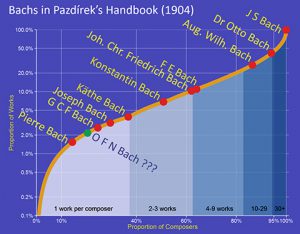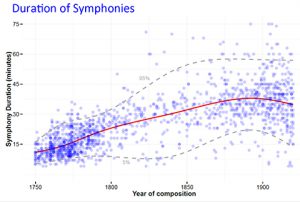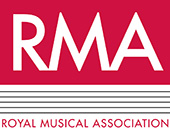Music and Statistics: Trajectories into Academia
In this blog post, Andrew Gustar explains how he uses statistics in his research and describes his trajectory from mathematics into music. Andrew is an Honorary Associate at the Open University, where he completed his PhD after MA degrees in music and mathematics. His main research interest is the application of quantitative methods to historical musicology.
Music passed me by at school, although I became interested in it in my teens, and learnt to play the piano. I read Mathematics at Cambridge in the 1980s, and took advantage of the city’s many concerts and music shops. After university, I trained as a life assurance actuary in Bristol, and my first month’s pay was spent on a digital piano. By 2003 my role as Head of Strategy had been largely taken over by the company’s parent organisation. This was an opportunity to take voluntary redundancy and change direction.
Music was the obvious choice. I could read and compose music but had never had any proper musical education, so signed up to the Open University’s introductory music course. By the end of the course’s Summer School, I was hooked! I went to lots of concerts, joined some local organisations, and became a trustee of Bristol’s professional orchestra. I was a regular volunteer at Dartington International Summer School – a week or two of hard labour in exchange for spending time with wonderful musicians. Having completed the OU’s undergraduate music courses, I started the MA programme.
My Masters Dissertation aimed to explain the scarcity of 7/4 metres in Western music. It is an interesting methodological challenge to study the absence of something, and I was able to look at a wide period, a large geographical area, and several genres. An interdisciplinary approach drew on psychology, statistics and memetics as well as several branches of musicology. I revised my dissertation and submitted it to the Journal of the Royal Musical Association which, after peer review, further revision and editing, published it in 2012 [1]. Encouraged by this, I submitted one of my MA projects, on the history of the song ‘Black Ey’d Susan’, to Folk Music Journal [2].

Some quantitative questions arising during the MA got me interested in doing a PhD on the use of statistical techniques in the study of music history. There are vast collections of historical data – library and publishers’ catalogues, record guides, biographical dictionaries, databases, etc. – but they are only ever used to look up specific information. However, they are also snapshots of the populations of composers or works, and statistical techniques can be used to quantify them, and to find patterns and trends that are invisible to qualitative methods. It took some persistence to sell this idea to the university, but I started work, split between the OU’s Music and Statistics departments, at the end of 2009. The research was a series of case studies, covering a range of sources, topics, and techniques designed to explore the pros and cons of this approach in different situations [3].

After the PhD, there were lots of ideas that I wanted to explore further. I was able to remain attached to the OU as an ‘Honorary Associate’: an unpaid researcher with continued access to university resources. As part of the wider Music department, I can take part in conferences and events, and have opportunities to work with other academics. I was soon invited to write some modules for a new MA programme, using ideas and materials from my thesis. I also analysed the population of nineteenth-century symphonies, and presented a joint conference paper with Dr Robert Samuels [4].
I think it is important for music historians to understand the value of statistics. Even within primarily qualitative research, these techniques can help put the broader musical world into context, or can verify (or refute) received assumptions. The analysis of symphonies, for example, disproved Dahlhaus’ supposed ‘dead era’ of symphonic production in the third quarter of the nineteenth century [5]. Statistics is widely used in other historical fields, in other corners of musicology (such as psychological and perception studies), and across many academic disciplines, so help should not be hard to find. Currently, my dissemination strategy is to seek out conference opportunities, building on previous work or exploring new sources or techniques. Recently I have presented papers on the population of little-known composers [6], and on the migration patterns of Russian composers [7]. Conferences are useful sources of feedback on my work, and often generate new ideas and research topics.
I would advise new students to think boldly and laterally about their research questions. The musical world is enormously diverse, but musicologists can too often fall back on well-trodden subjects about which we already know a great deal. Plenty of questions have never been asked (let alone answered), and there is huge scope for interdisciplinary research using ideas from other fields. The most exciting and innovative research often comes from trying to answer the hardest questions!

[1] ‘The Closest Thing to Crazy: The Shocking Scarcity of Septuple Time in Western Music.’ Journal of the Royal Musical Association, 137.2 (2012), pp.351–400.
[2] ‘The Life and Times of Black Ey’d Susan: The Story of an English Ballad.’ Folk Music Journal, 10.4 (2014), pp.432–448.
[3] ‘Statistics in Historical Musicology.’ PhD thesis, Open University (2014). Available at http://oro.open.ac.uk/41851/
[4] ‘The demographics of nineteenth-century symphonies: does scholarly opinion stand up to the scrutiny of Big Data?’ at the Society for Musicology in Ireland Conference, Cork, June 2015.
[5] Dahlhaus, Carl. Nineteenth-Century Music trans. J. B. Robinson. Berkeley: University of California Press, 1989, p.78.
[6] ‘Gödel, Pazdírek, Bach: An Eternal Golden Slide’ at The Hidden Musicians Revisited conference, Open University, Milton Keynes, January 2016.
[7] ‘Russia and Composers’ Migration in the Nineteenth Century’ at the Russia and the Musical World conference, Goldsmiths, London, December 2016.



Superb Andrew. amazing knowledge. Proud of yet another Gustar!
Trudy Pittaway/!Gustar